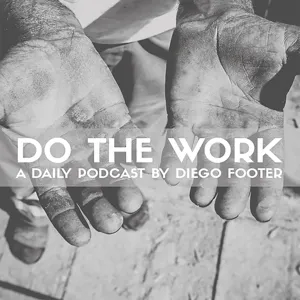Podcast Summary
The role of the prefrontal cortex in cognitive flexibility and task switching.: Understanding how the prefrontal cortex functions in directing focus and cognition can improve our ability to effectively switch tasks and adapt to different cognitive operations.
The prefrontal cortex plays a crucial role in directing our focus and cognition in a context-dependent manner. It allows us to carry out different types of cognitive operations based on the specific tasks at hand. For example, the cognitive operations required for math class are different from those needed for history or social studies. However, there may also be some common features or rules that apply to all subjects. Cognitive flexibility, on the other hand, refers to our ability to switch between different cognitive operations based on what we're trying to learn or understand. While task switching requires cognitive flexibility, it is not the same thing. Understanding the functions and distinctions between these processes can help us improve our ability to switch tasks effectively.
Understanding the Challenges of Task Switching: Task switching between mental and physical activities can be challenging and time-consuming. By understanding these challenges, we can better manage our time and focus on our tasks effectively.
Task switching involves transitioning between different mental or physical activities. It is commonly studied in laboratory experiments where participants switch between cognitive tasks or manipulate objects. However, fewer studies have explored task switching between physical and cognitive activities. Although extreme examples like chess boxing exist, it is not recommended to engage in these activities. Many individuals, including myself, struggle with task switching. It can take time to fully immerse ourselves in a new task and reach a state of deep focus. Understanding the challenges of task switching can help us better manage our time and focus on the tasks at hand.
The Power of Transition Gaps: Enhancing Task Switching Efficiency: Taking a few minutes to transition between tasks improves focus and memory retention, boosting productivity and reducing frustration. Take a break and reset your mindset for success.
Introducing short transition gaps between tasks can greatly improve our ability to task switch effectively. This concept is often overlooked, but research supports its effectiveness both at a mechanistic level and in practical applications. Many people feel pressured to immediately focus on a new task without giving their brains time to adjust, leading to frustration and decreased productivity. By allowing ourselves a few minutes of transition time, we give our neural circuits the opportunity to come online and engage at the necessary levels for focused attention and memory retention. So, next time you find yourself struggling to switch tasks, give yourself a short break to reset your mindset and set yourself up for success.
The Importance of Transition Periods in Maximizing Focus and Performance: Taking 5-10 minutes to transition between tasks allows our brains to disengage and engage with new activities, leading to better attention and performance.
Our brains need a transition period when switching tasks. Whether it's shifting focus from one activity to another or moving from a physical task to a mental one, our neural circuits require time to disengage from one activity and engage with another. This transition period typically lasts around 5 to 10 minutes. It's important to understand that expecting immediate focus or peak performance without this transition period is unrealistic and can lead to feelings of inattention or inadequacy. Just as we would warm up before physical exercise, we need to give our brains the time to switch gears and adjust to new tasks. So be patient with yourself and allow for this transition period to optimize your attention and performance.
Understanding our biology and incorporating transition periods can enhance focus and task performance.: Acknowledging task completion and incorporating transition periods can optimize brain function, reduce time to engage in the next task, and improve overall task performance.
Our ability to focus and perform tasks effectively is influenced by our understanding of our own biology. It is important to match our expectations of our abilities to the actual functioning of our neural circuits. Additionally, when switching from one task to another, it is beneficial to introduce a transition period, even a brief one, to improve task engagement. This transition period, designated as such, helps our brains move more efficiently from one task to another. No prescription drugs or supplements are required for this improvement. By acknowledging the completion of a task and consciously leaving it behind during the transition period, we can avoid placing unfair expectations on our neural circuits and reduce the time it takes to fully engage in the next task. The duration of the transition period should be proportional to the depth of focus required for the previous task.
Transitioning between tasks: Consider cognitive engagement and designate transition time.: Transitioning between tasks requires considering the cognitive engagement level. Longer transition periods are needed for deeply focused tasks, while shorter periods suffice for less demanding tasks. Prioritizing transition time improves performance.
When transitioning between tasks, it's important to consider the level of cognitive engagement in the previous activity. If you were deeply immersed and focused, it is advisable to give yourself a longer transition period, perhaps 5 to 10 minutes, to allow your mind to shift gears and fully disengage from the previous task. However, if the previous task was less demanding and required less cognitive effort, a shorter transition period, even just a couple of minutes, may suffice. Regardless of the length, it is crucial to designate and prioritize this transition time. During this period, it is important to maintain a relative lack of attention to anything new, allowing your mind to reset and prepare for the upcoming task. Remember that even a brief transition period can significantly improve your ability to perform in the next task.
The importance of uninterrupted transition periods for optimal task switching.: Avoid distractions during transition times to enhance focus and productivity.
Incorporating transition periods without distractions, such as looking at your phone, is crucial for optimal task switching. While smartphones are not inherently bad, using them during these transition times can hinder our ability to focus and perform tasks effectively. By allowing ourselves 2 to 10 minutes of uninterrupted time between activities, we give our brains a chance to reset and prepare for the next task without overwhelming it with new information. This means avoiding texting, social media, or actively seeking new stimuli. By limiting task switching and minimizing the introduction of additional tasks or distractions, we can optimize our cognitive abilities and improve our overall productivity.
Boost Productivity: Focus on the Essential Tasks and Train Your Brain: Prioritize three important tasks each day, practice perceptual switching to enhance task-switching abilities, and optimize productivity by maintaining focus and efficiently achieving goals.
Focusing on a limited number of critical tasks each day can greatly improve productivity. Andrew Huberman suggests writing down no more than three important tasks to accomplish, allowing for dedicated focus and efficient completion. By prioritizing these tasks, one can avoid getting overwhelmed or distracted by unnecessary activities. Additionally, incorporating an exercise called perceptual switching can further enhance task-switching abilities. This exercise, unrelated to meditation, involves training the visual system and the parts of the brain responsible for time perception to work together effectively. By implementing these strategies, individuals can optimize their productivity, maintain focus, and achieve their goals effectively and efficiently.
Enhancing Task Switching with Visual Attention: Practicing directed visual attention exercises can improve task switching abilities, leading to seamless transitions between tasks.
Where you focus your visual attention can greatly impact your perception of time. By using a simple perceptual tool, such as directing your attention to your breathing or the surface of your skin, you can improve your ability to task switch. This tool involves closing your eyes and focusing internally, and then opening your eyes and focusing on an intermediate or distant location. Taking just a couple of minutes for this exercise can enhance your ability to transition between tasks effectively. It's important to find a peaceful environment, preferably outdoors or with a view, but it can also be done indoors. By practicing this technique regularly, you can improve your ability to switch tasks seamlessly.
Enhancing Task Switching Abilities through Visual Focus and Time Perception.: Shifting our visual focus and perceiving time differently can improve task switching abilities, allowing for better execution of tasks aligned with the correct time domain.
By shifting our visual focus and the way we perceive time, we can improve our ability to switch tasks effectively. Andrew Huberman's perceptual exercise demonstrates how we can train our brains to shift attention from immediate surroundings to designated locations in our environment. This exercise not only helps us recognize the different operations required for different tasks, but also has an impact on the neural circuits that underlie our perception of time. By practicing this exercise, we can enhance our ability to execute tasks with high proficiency by aligning our thinking and actions with the correct time domain. While this topic deserves further exploration, it is clear that training our brains to shift visual focus and process time differently can significantly improve task switching abilities.
Understanding How Our Brain Works in Different Tasks and Environments: Recognize and respect the transitions between tasks, allowing for a brief transition period to avoid distractions and enhance cognitive flexibility.
Our brain operates differently depending on the task at hand and the environment we are in. When we focus on things that are close to us, such as bodily sensations or immediate surroundings, we are fine-slicing in the time domain. On the other hand, when we engage in tasks that require more cognitive effort, like reading or math, our brain functions in a different way. It's important to recognize and respect these transitions between tasks and allow for a brief transition period, even if it's just a few seconds. During this time, it's crucial to avoid distractions and not engage in multiple time domains. Additionally, expect some difficulty in getting into the groove when switching between tasks or starting a new task. To enhance cognitive flexibility, it can be helpful to practice shifting visual attention between close and far locations.
Enhancing Task-Switching with Perceptual Tools: Practicing perceptual tools regularly can improve our ability to switch tasks efficiently, allowing us to consciously control the transition between different tasks and environments for optimal performance.
Practicing perceptual tools can significantly enhance our ability to switch tasks effectively. By engaging in a brief perceptual practice, even just once a week or a few times a week, we can train our brains to adapt and transition more efficiently between different tasks and environments. This practice allows us to consciously control the shift in neural circuits that occur when moving from one task to another. Understanding that our brains need time to adjust and that we can accelerate this process by using perceptual tools is key. Additionally, specific tools tailored to the type of cognitive or physical tasks we need to perform can further improve our task-switching abilities. Overall, by taking conscious control over transition periods, we can optimize our performance and make task switching a smoother and more effective process. Just remember to prioritize safety and avoid practicing while driving or operating machinery.




